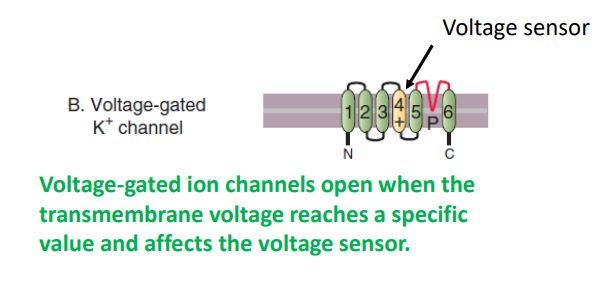Cellular communication - Lecture 8: Transport across the cell membrane
1/19
There's no tags or description
Looks like no tags are added yet.
Name | Mastery | Learn | Test | Matching | Spaced |
|---|
No study sessions yet.
20 Terms
Why does the cell need to transport material across the plasma membrane?
absorb nutrients
secrete waste
respiration
secretes substances important for survival and communication with surrounding life
uses bioelectricity for several functions, which depends on the movement of charged ions across the membrane
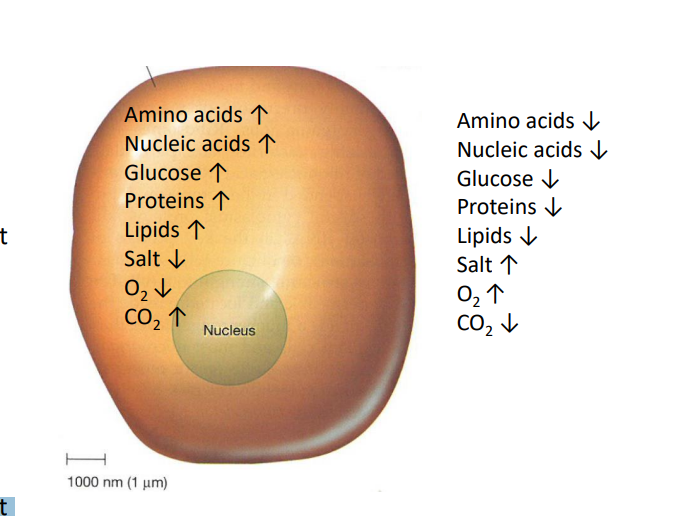
What is the process in which a secretory vesicle fuses with the plasma membrane, releasing the vesicle content to the exterior of the cell and then the vesicle membrane becomes part of the cell membrane?
exocytosis
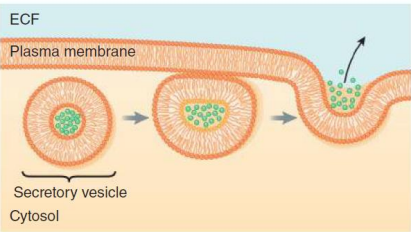
What is the process in which materials from the cell exterior are enclosed in a segment of the plasma membrane that pockets inward and pinches off an an endocytic vesicle?
endocytosis
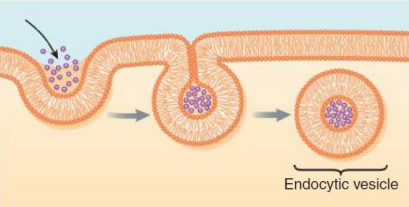
What are the functions of exocytosis and endocytosis?
exocytosis
release of neuro transmitters, hormones, and cytokines and many proteins involved in cellular communication
endocytosis
involved in sampling the extracellular environment and the recycling of membrane proteins
How does the cell sample the environment?
endocytosis
the extracellular particle binds to receptor
receptor attracts clathrin protein from inside the cell
a vesicle starts to form which will be clathrin coated
clathrin is removed
the vesicle is fused with the lysosome
enzymes in the lysosome break down the particles into small pieces
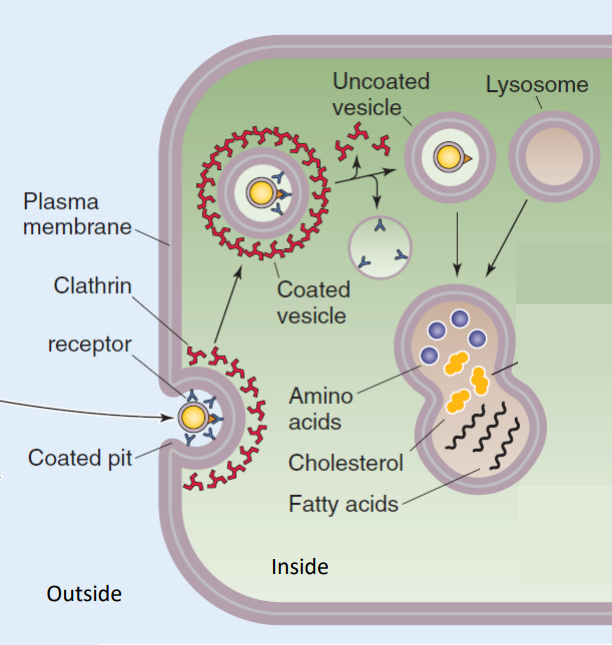
What controls the vesicle fusion to the membrane?
membrane proteins, fueled by ATP
How are secretory and membrane proteins transported to final destination?
transported from the ER to the Golgi apparatus then to the plasma membrane where they fuse and secrete their contents
some proteins are transported through the contiguously active constitutive pathway
other proteins are stored in vesicles ready to be secreted in response to a stimulus such as hormonal or neural signals. This is a regulated secretion pathway.
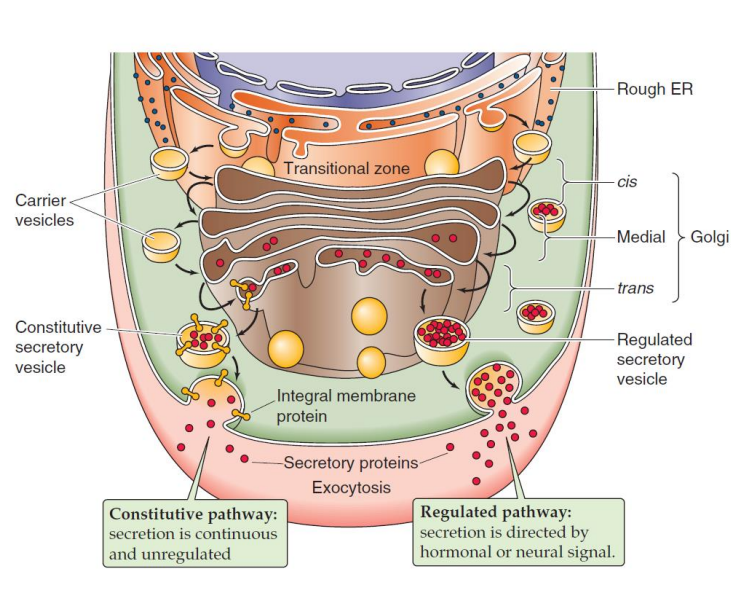
What is the synthesis pathway for membrane and secretory proteins?
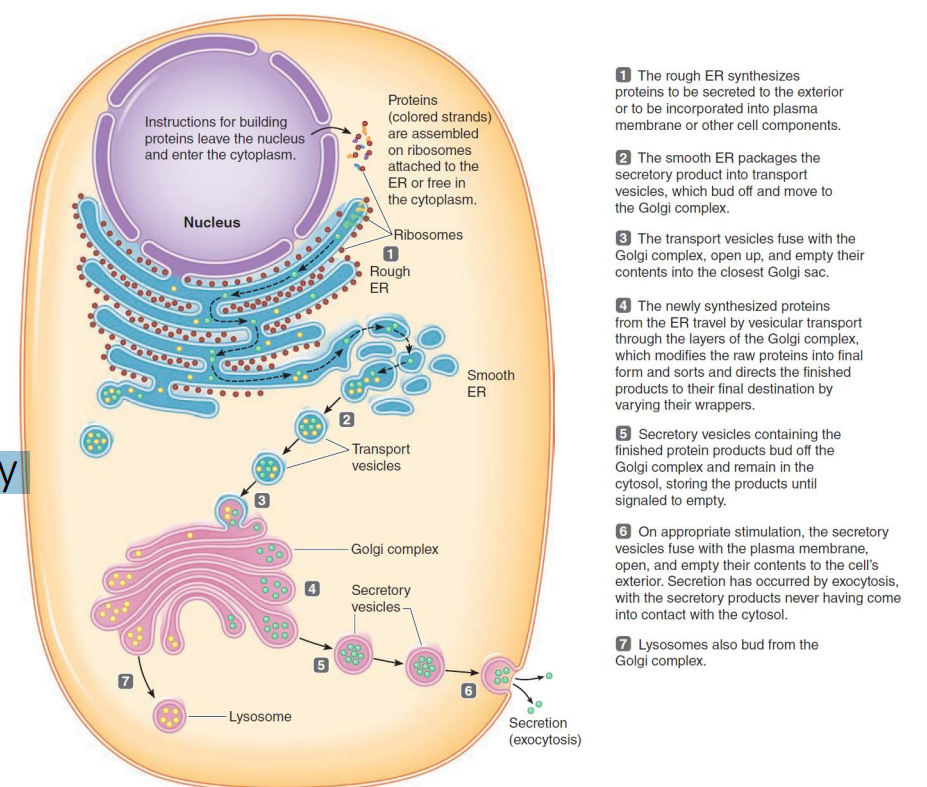
What is the function of the Ca-H pump and the Na-Ca exchanger?
keep intercellular [Ca2+] four orders of magnitude lower than extracellular [Ca2+], stored by the ER
What is the function of the Na-K pump?
keeps [Na+] inside the cell low, and [K+] high
transports 3 Na+ ions outside and 2 K+ ions inside
What are the transport mechanisms by membrane proteins?
transport
passive transport → carriers, ion channels
active transport
primary active transport → pumps
secondary active transport → co-transporters, exchangers
What is another term for pumps?
primary active transporters
What are cotransporters?
secondary active transporters
membrane proteins that transport two molecules in the same direction
the concentration gradient of one acts as a driving force of another molecule such as glucose and amino acids
e.g. Na/glucose cotransporter (SGLT1- 3) transport glucose into the cell using the concentration gradient of Na+ ions
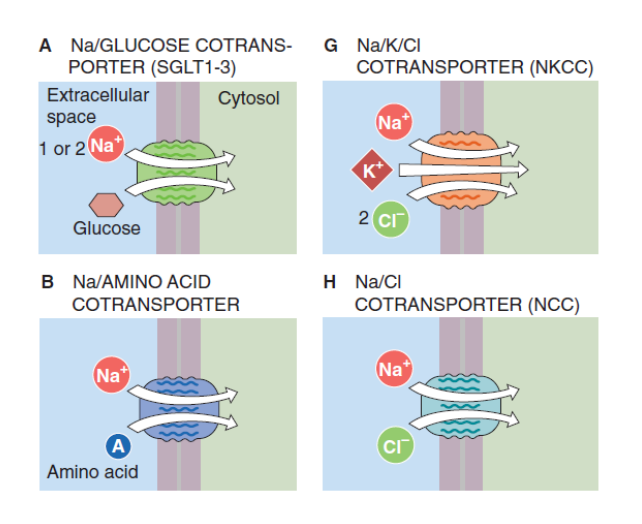
What are exchangers?
secondary active transporters
utilise the concentration gradient to transport a different ion to the opposite direction
e.g. in one cycle, Na-Ca exchanger transports 3 Na+ ions to the inside of the cell and one Ca2+ ion to the outside of the cell
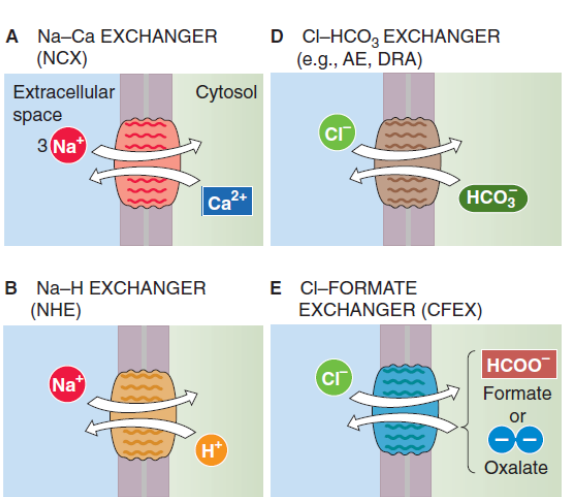
What are carriers?
proteins that transport ions and small molecules down their concentration and electrical gradient
usually contain two gates
have specialised roles in the passive transport of materials such as ions, amino acids and sugars
all carriers that do not either hydrolyze ATP or couple to an electron transport chain are members of the solute carrier (SLC) superfamily

What are aquaporins?
aquaporins are large membrane proteins that form water channels
these proteins can be found in tissues where water transport is essential, including the intestine and the kidneys
water moves through aquaporins in the osmolarity direction
generally, water moves towards high salt or protein direction
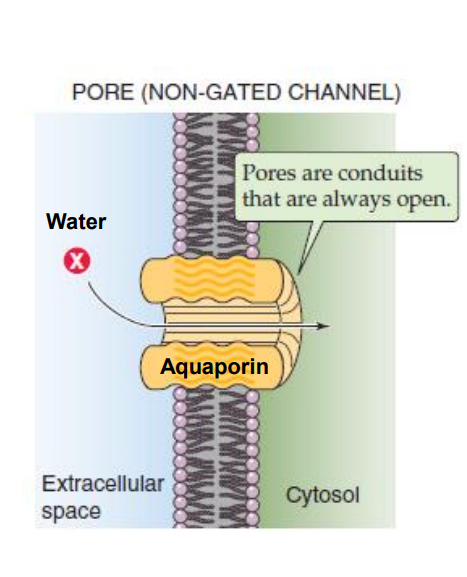
What are ion channels?
regulated pores that have gates inside them (each ion channel has one gate)
these gates open in response to external stimuli, such as voltage change or the binding of a chemical compound (ligand)
ion channels are usually selective to one or a group of ions
ions move passively down their electrochemical gradient (gradient imposed by differences in concentration and electrical charge across the membrane)
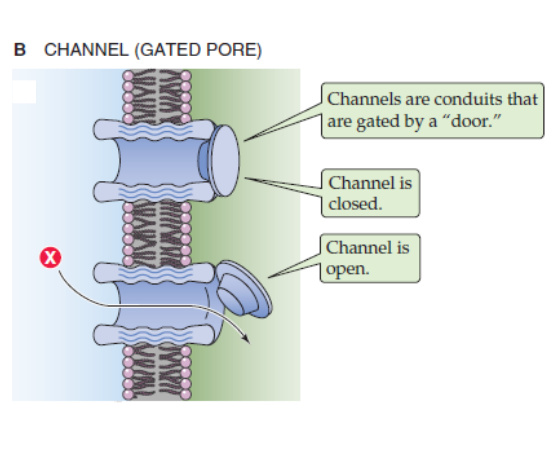
What are the classifications of ion channels?
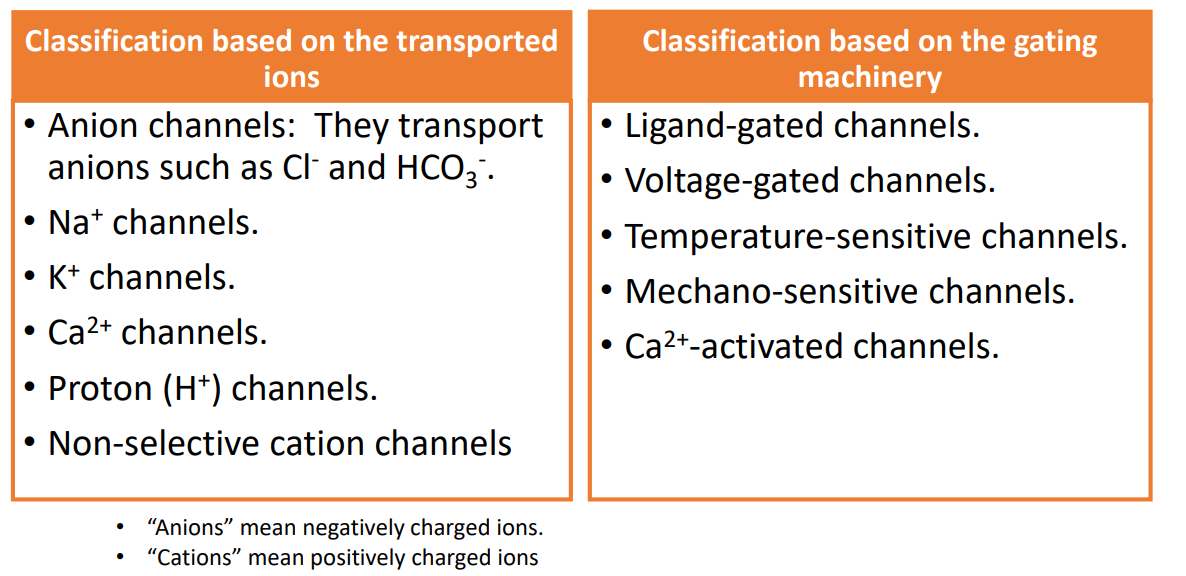
How do ligand-gated ion channels open?
open in response to the binding of chemical stimulants or ligands to the ion channel. These channels have ligand binding sites that bind to specific chemical ligands (or agonists) inside or outside the cell
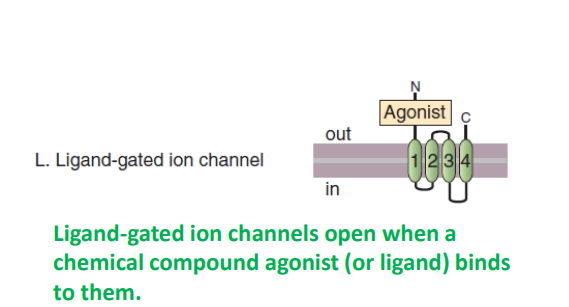
How do voltage gated ion channels open?
open in response to changes in electrical voltage across the membrane. These channels have voltage-sensing domains which contain positive charges that are influenced by cross-membrane voltage
